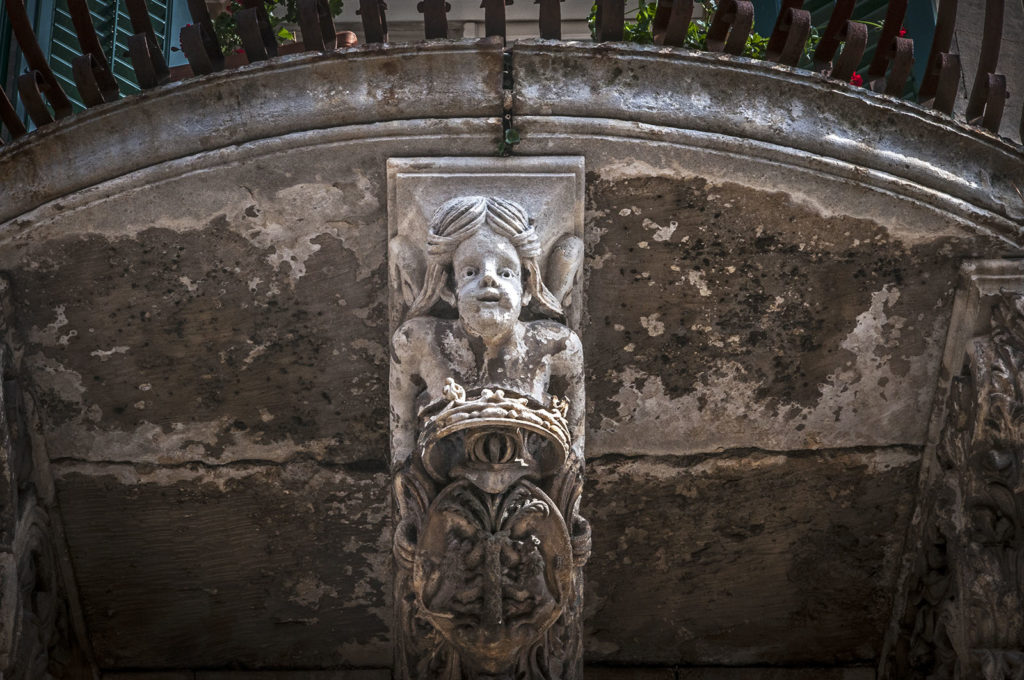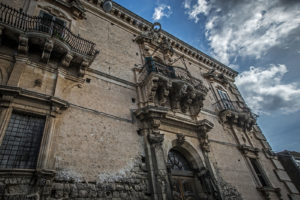 Palazzo Tommasi Rosso is located on Corso Francesco Crispi, behind the Cathedral of San Giorgio (St. George), in the ancient district of Francavilla. It is an important testimony to the late Baroque architecture of Modica. Though the palace is named Napolino Tommasi Rosso, the family that commissioned the building was probably the Lorefice family.
Palazzo Tommasi Rosso is located on Corso Francesco Crispi, behind the Cathedral of San Giorgio (St. George), in the ancient district of Francavilla. It is an important testimony to the late Baroque architecture of Modica. Though the palace is named Napolino Tommasi Rosso, the family that commissioned the building was probably the Lorefice family.
In the second half of the 18th century, work began on a majestic two-storey palace with an internal courtyard and a rich, elaborate façade. The façade is symmetrical; the portal in the middle, with two windows on the sides, and three balconies with
corbels
on the second storey.
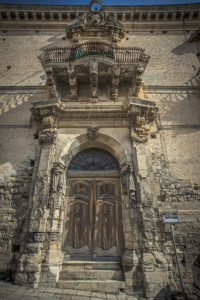
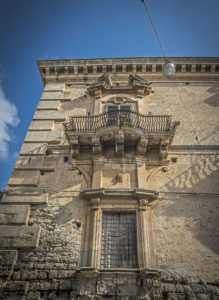
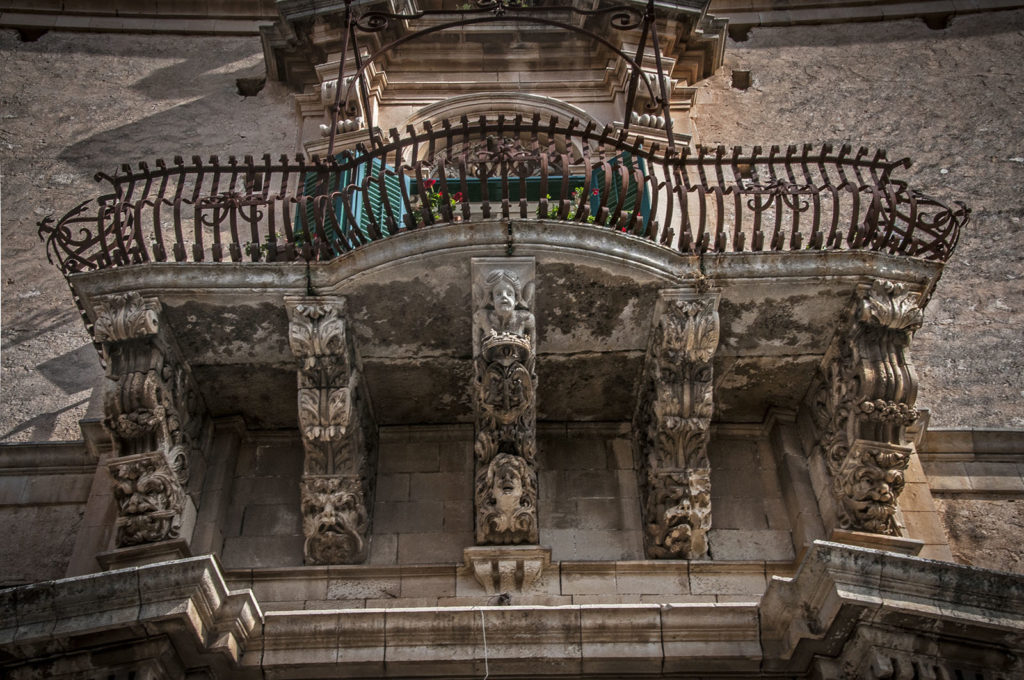
The large portal is enclosed on the left and right by two columns, on which are carved two lion heads and from which hang two elegant cloths. The top is completed by an elegant protruding
trabeation
with a broken line, typical of Baroque architecture.
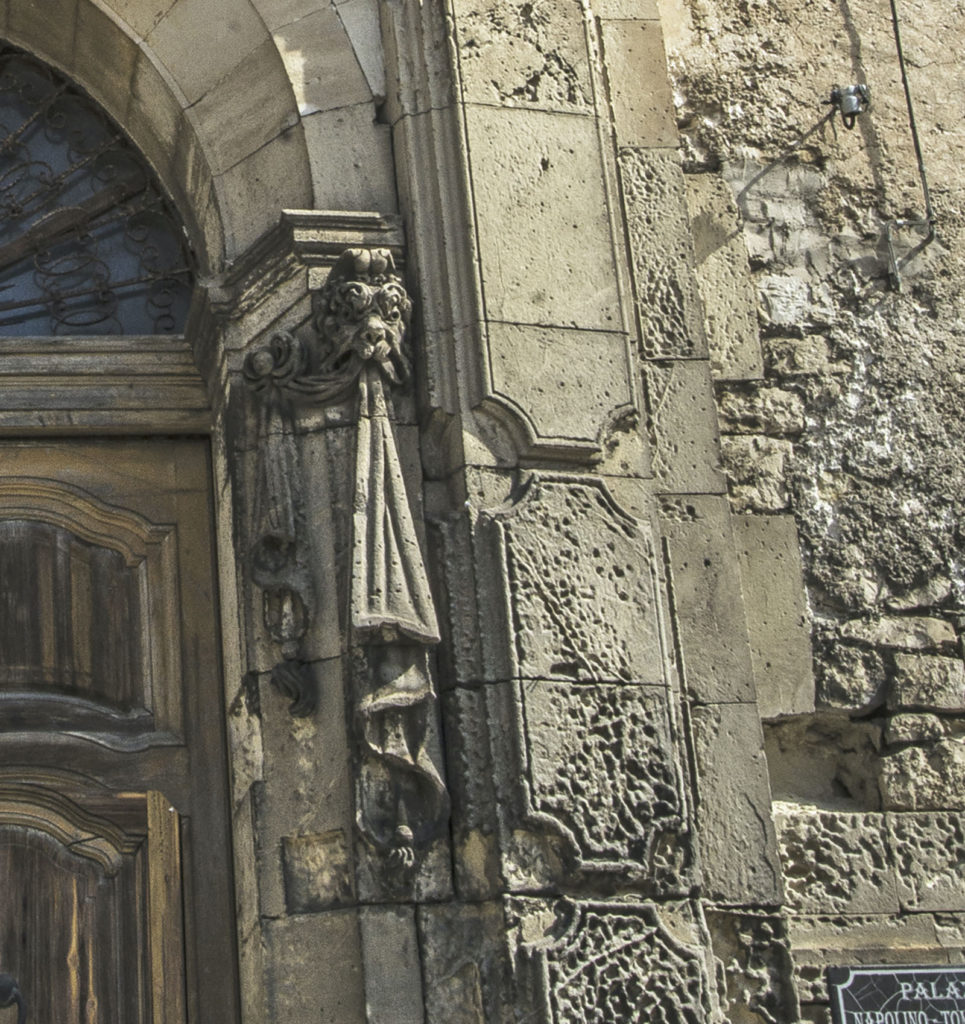
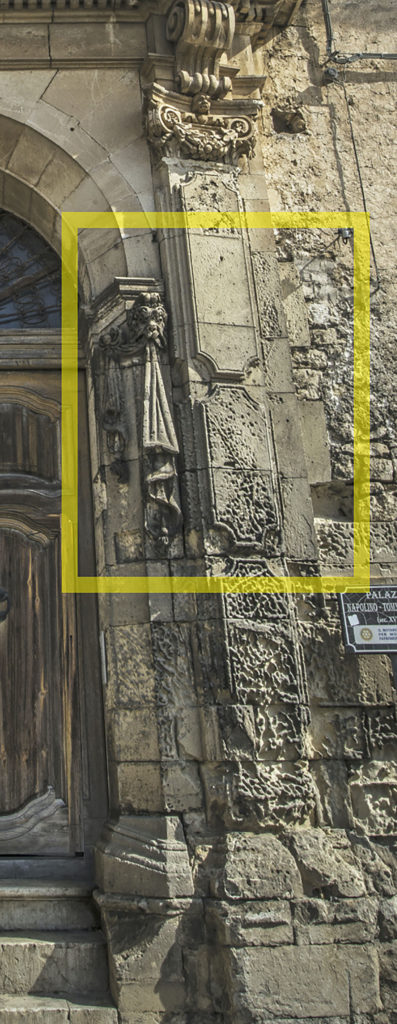
The large corbels, five per balcony, are all richly decorated; the two lateral ones were embellished with plant motifs and the middle one features the classic masks of the late Sicilian Baroque palaces. The palace is an elegant building in the heart of the town that tells the story of a bygone era.
